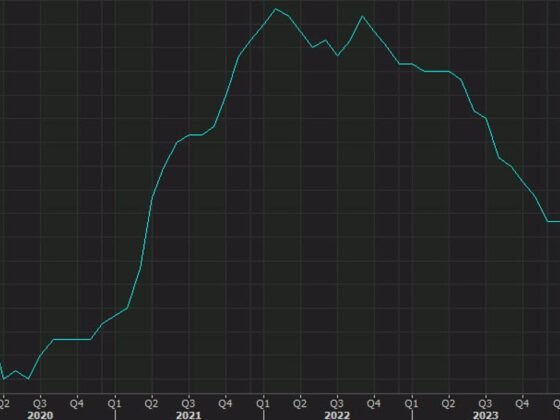
Patients and patient advocates are calling on the US National Institutes of Health (NIH) to reconsider its decision to include exercise trials in its RECOVER initiative, which aims to study and find treatments for long COVID. They argue that a large proportion of people with long COVID have reported experiencing post-exertional malaise (PEM) — a worsening of symptoms such as fatigue, difficulty regulating body temperature and cognitive dysfunction, after even light exercise — and worry that putting certain RECOVER participants through exercise trials could cause them harm. In a petition and multiple letters, the advocates request that the NIH and affiliated physicians explain their rationale for this testing and share the trial protocols.Long-COVID treatments: why the world is still waiting
Up to 23 million people in the United States have developed long COVID, according to a report from the US Government Accountability Office. The condition has affected their lives and livelihood: an analysis of people with long COVID who filed workers’ compensation claims in New York State between 1 January 2020 and 31 March 2022 found that 18% of them had still not returned to work more than a year after being infected with the coronavirus SARS-CoV-2. Advocates want to see the RECOVER exercise protocols because they are concerned that trial participants will not be adequately informed about the potential risks; that participants will not be properly screened for PEM; and that researchers will not sufficiently monitor people for harm in the hours after the exercise regimen or after the trial concludes.
“In a world where there’s hundreds of things to trial, why are we choosing this one thing that we know has the potential to cause harm to a substantial portion of patients?” asks Lisa McCorkell, a co-founder of the Patient-Led Research Collaborative for long COVID, a research and advocacy group based in Washington DC.
The RECOVER Clinical Trials Data Coordinating Center at the Duke Clinical Research Institute in Durham, North Carolina, sent Nature a statement on behalf of the NIH saying that the trials being planned for RECOVER — which stands for Researching COVID to Enhance Recovery — have not yet launched and that the agency is working with patient representatives in shaping the exercise trial protocol. The statement also says that the study’s investigators are meeting with those representatives to discuss the concerns expressed in the letters and petition. The NIH did not make the representatives available to Nature for an interview by the time this story was published and said that the full protocols for the trial would be released publicly only after they have been reviewed by an institutional review board.
Hitting a wall
Long COVID isn’t the first disease for which people have reported experiencing PEM. People who have myalgic encephalomyelitis, also known as chronic fatigue syndrome (ME/CFS), have long reported exacerbation of symptoms after overexertion that make their day-to-day functioning difficult. Similar to long COVID, ME/CFS often develops after a viral illness; its symptoms include PEM, cognitive impairment and joint and muscle pain.
Jaime Seltzer, who has ME/CFS, first experienced PEM after some gentle exercise. “It felt fine until I hit my wall, after which I experienced a drop in core body temperature, started shaking, had trouble thinking,” says Seltzer, who is scientific and medical outreach director for the international advocacy organization #MEAction USA, based in Santa Monica, California, which sent the letters to the NIH. “It was like I had suddenly been dropped in the Arctic.” She then slept for 18 hours, after which she was unable to get out of bed.
Although it seems counter-intuitive that exercise — normally considered an ingredient of good health — can cause harm, researchers have confirmed some of the physical effects of PEM through controlled studies. Scientists have measured people’s heart rate and oxygen intake during 2 maximal-exertion exercise tests spaced 24 hours apart. They found that those with PEM perform noticeably worse on the second day. Meanwhile, for those without PEM — a group that included athletes, sedentary people and people with conditions such as heart failure and cystic fibrosis — results were similar, if not identical, on both days. Studies have also shown unusual patterns in gene expression, metabolism and cognitive functioning after exertion for those with PEM.
Exercise overload
As researchers find out more about long COVID, it has become clear that many people with the condition meet the criteria for ME/CFS. In a study published online late last year5, researchers reported that of the 465 people with long COVID surveyed, 58% could be categorized as having ME/CFS.US health agency will invest $1 billion to investigate ‘long COVID’
And in a 2021 study, researchers at the Patient-Led Research Collaborative, including McCorkell, surveyed 3,762 people with long COVID and found that, over a 7-month period, one of the most frequent symptoms reported was PEM6. Around 89% of participants reported experiencing PEM at some point during the course of their illness, with 72% of them still reporting it at month 7.
All of this has advocates concerned about the inclusion of exercise trials in the RECOVER initiative. According to the NIH, RECOVER is the most expansive long-COVID study yet, with the trials expected to last four years, and to enrol more than 15,000 adults and 6,000 children.
The statement from the NIH to Nature said that the exercise trial would use “inclusion and exclusion criteria to make sure that people who could be harmed by exercise will not be included in that platform trial”. But patient advocates still worry that the trials are a waste of time and money.
“Every dollar is precious” when seeking treatments, says JD Davids, co-founder of the advocacy organization Long COVID Justice, which is based in New York City, and author of the petition, which began circulating in December and now has more than 1,600 signatures.The four most urgent questions about long COVID
“It is evident the NIH RECOVER initiative is made up of many folks who are dedicated and determined to crack open effective treatments for long COVID,” says Charles McCone, an advocate based in San Francisco who Nature identified as a patient representative for the RECOVER trial. But it is “baffling and discouraging” that the initiative is including exercise — a treatment that has been largely ineffective and often harmful for those with ME/CFS, he says. “Dozens of drugs [for long COVID] have been identified as promising candidates that need immediate further study,” but funding is limited, he adds. McCone could not discuss the exercise trial protocol with Nature because he signed a non-disclosure agreement with the NIH.
The US Congress allocated US$1.15 billion to support RECOVER for four years, $172 million of which is being used to conduct clinical trials at the Duke Clinical Research Institute; the NIH declined to tell Nature how much of that money would be used to fund the exercise trials.











